August 18-24, 2024
A strange, muddled changing of the seasons

What was "summer" has turned into a long series of first smoky, and now simply overcast days, along with a heavy dose of rain (1.5 inches!) to close out the week.
Week in Review
We can't close out the week without mentioning the run of weather we've been having lately and how it feels so different from last year's weather. Over the past week we've had an endless parade of gray days with temperatures in the 70s and 80s along with a constant threat of rain, while last year the same week went from 104 degrees on August 17, to fresh snow in the mountains on the 23rd.
Historically, August is the turning of the seasons. Temperatures trend slightly downward from July's peak, and then after August they drop sharply. You can see this clearly in a graph of average temperatures for the Methow Valley.

Otherwise, in a repeat of last week, this week has been notable for the astonishing number and variety of birds that are active right now.
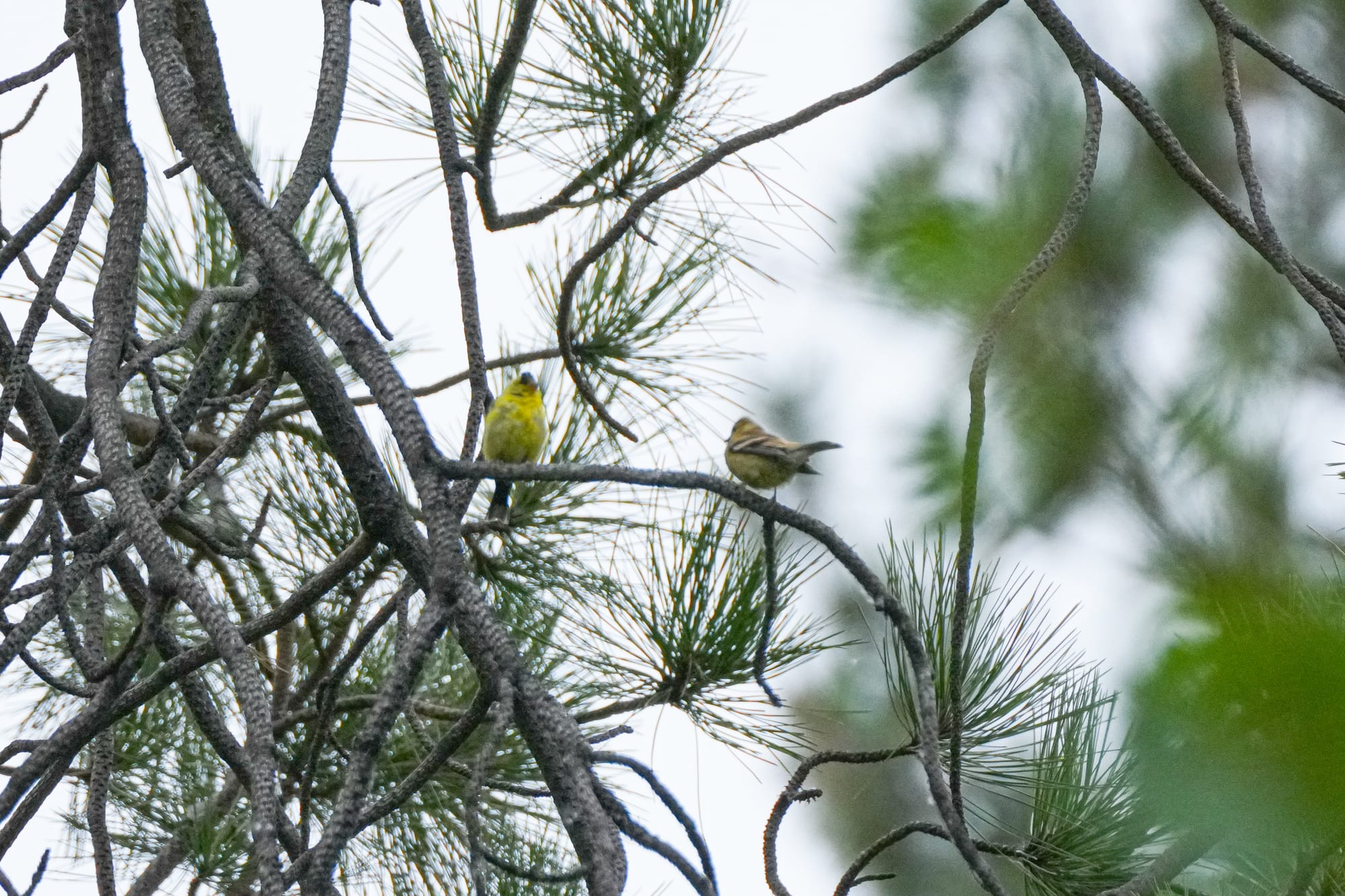
Many species seem to be gathering and moving, including groups of swallows, flocks of bluebirds, and dozens of sparrows at a time. Looking back over old records, I see that on August 25th last year I noticed the first groups of migrating ducks arriving so it's a reminder they could show up any day now.
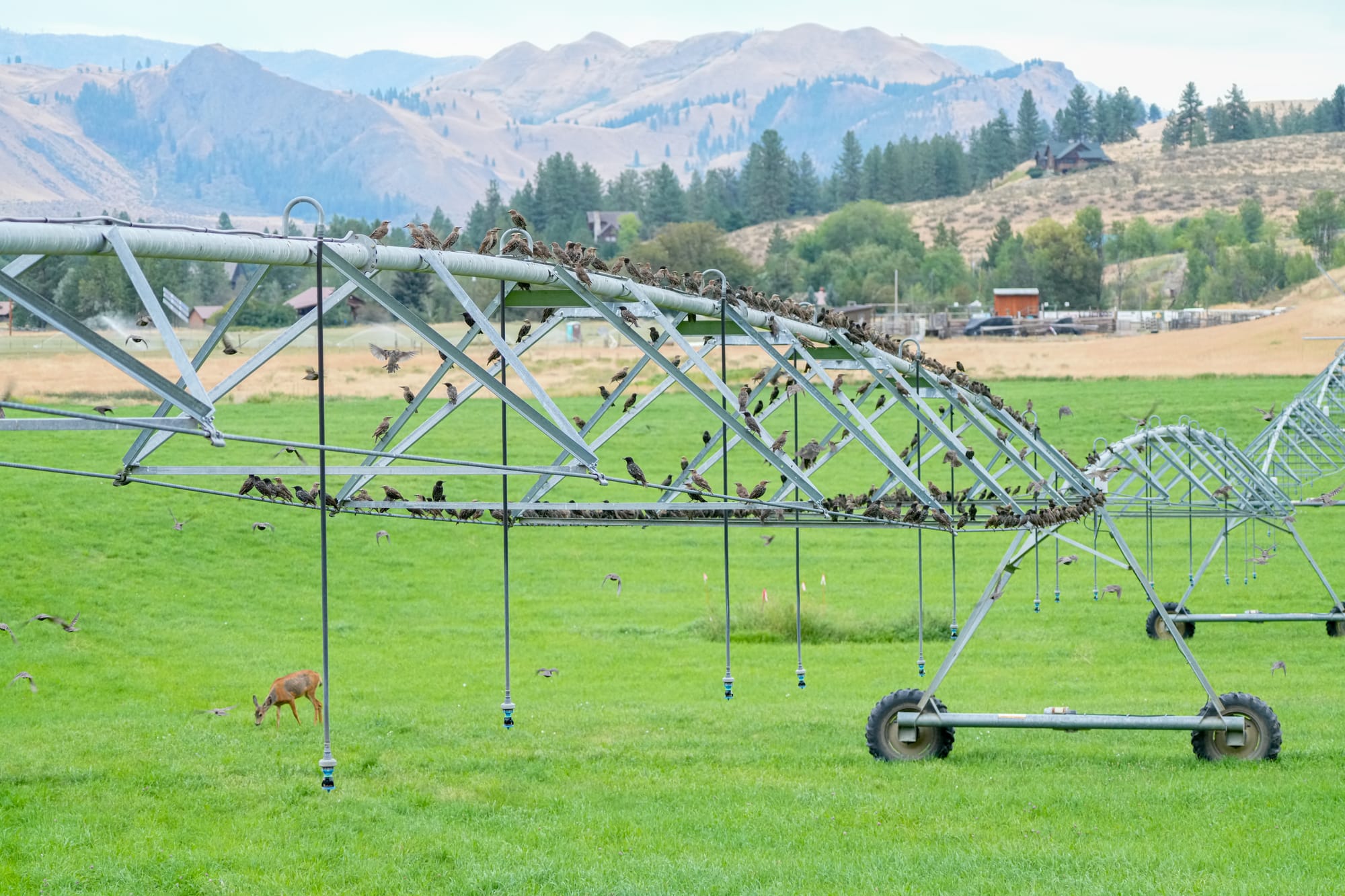
Some days, when it doesn't seem like anything else is going on, I'll wander out and look for snow buckwheats because these flowers are absolutely loaded with pollinators right now. In last year's Aug 20-26, 2023 newsletter I discussed this phenomenon, and it's no less true this year.
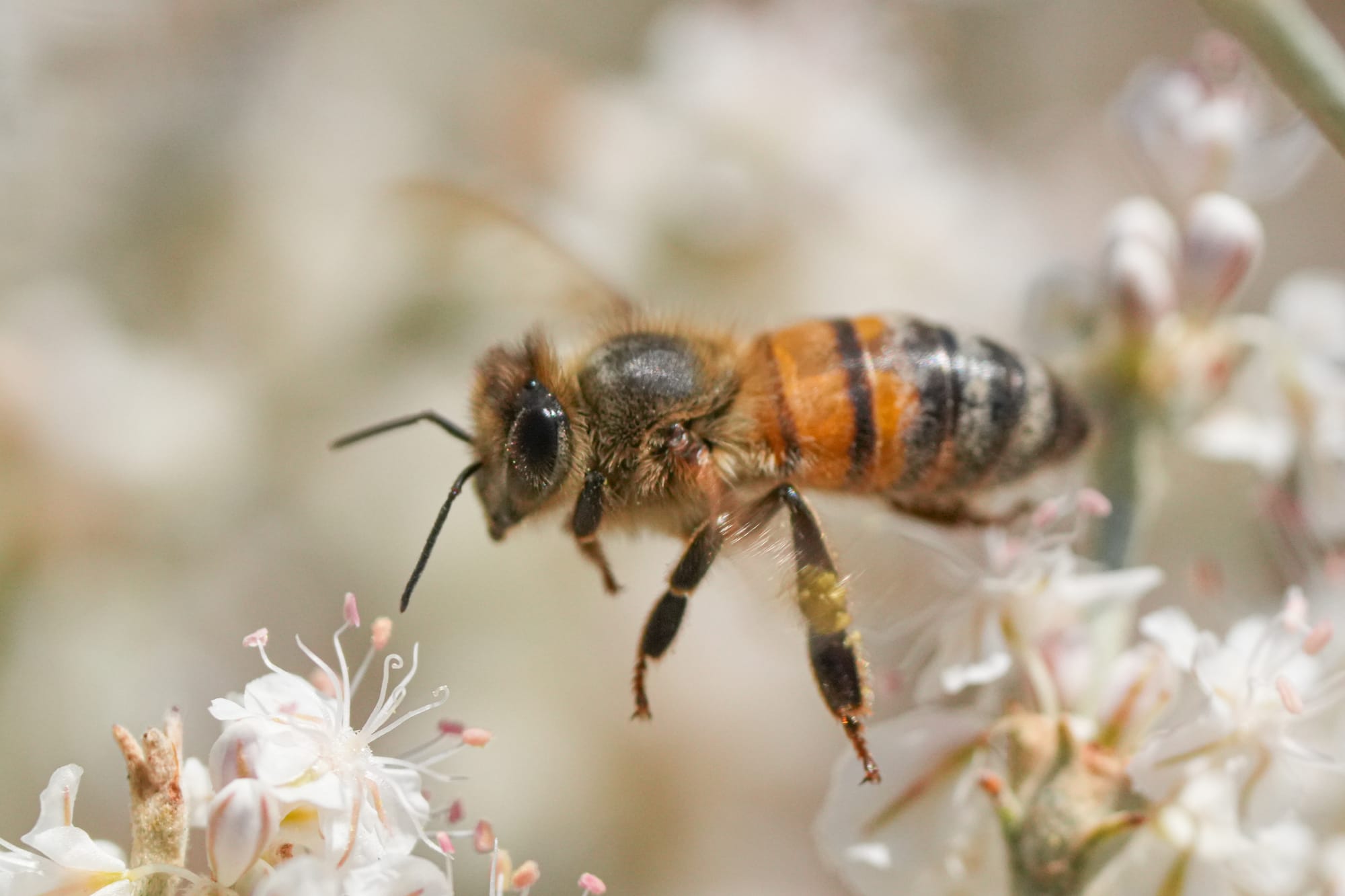
One difference, however, is that this year folks have also been noticing a lot of golden digger wasps and it's hard to miss these astonishingly large, colorful wasps. You'll spot adults collecting nectar from a variety of flowers (including snow buckwheat), but apparently, they specialize on capturing crickets and grasshoppers to feed their babies. It's entirely possible that golden digger wasps are doing so well this year because there have been so many darned grasshoppers!
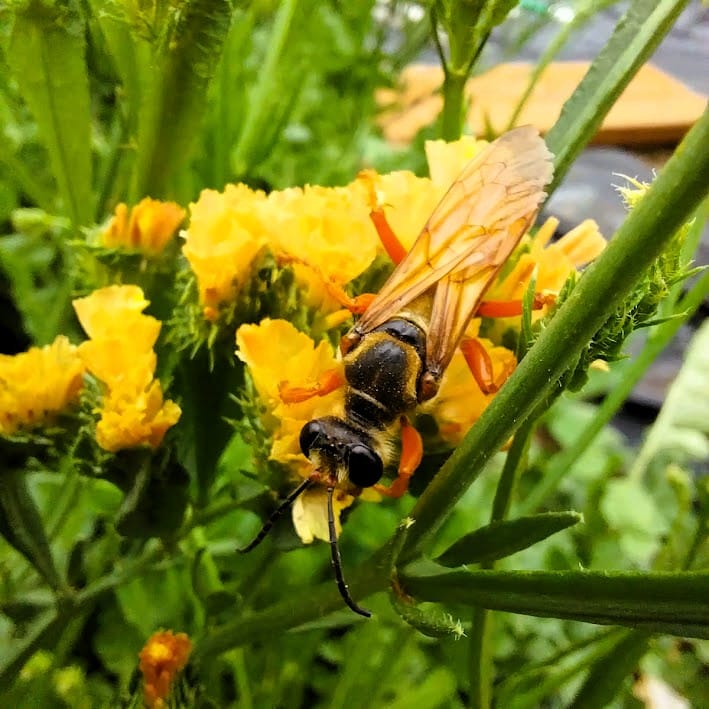
Earlier this summer I remarked on how few wasp nests I was noticing under the eaves around the house. Unfortunately, this observation doesn't seem to apply to yellowjacket nests because these pesky wasps are now out with a vengeance, and hungrier and angrier than ever. Yellowjackets have two pressing needs, one is to collect sugars to feed themselves, and the other is to collect protein (meat) to feed their rapidly growing babies. Take your pick, either way you're going to see them at your next picnic!
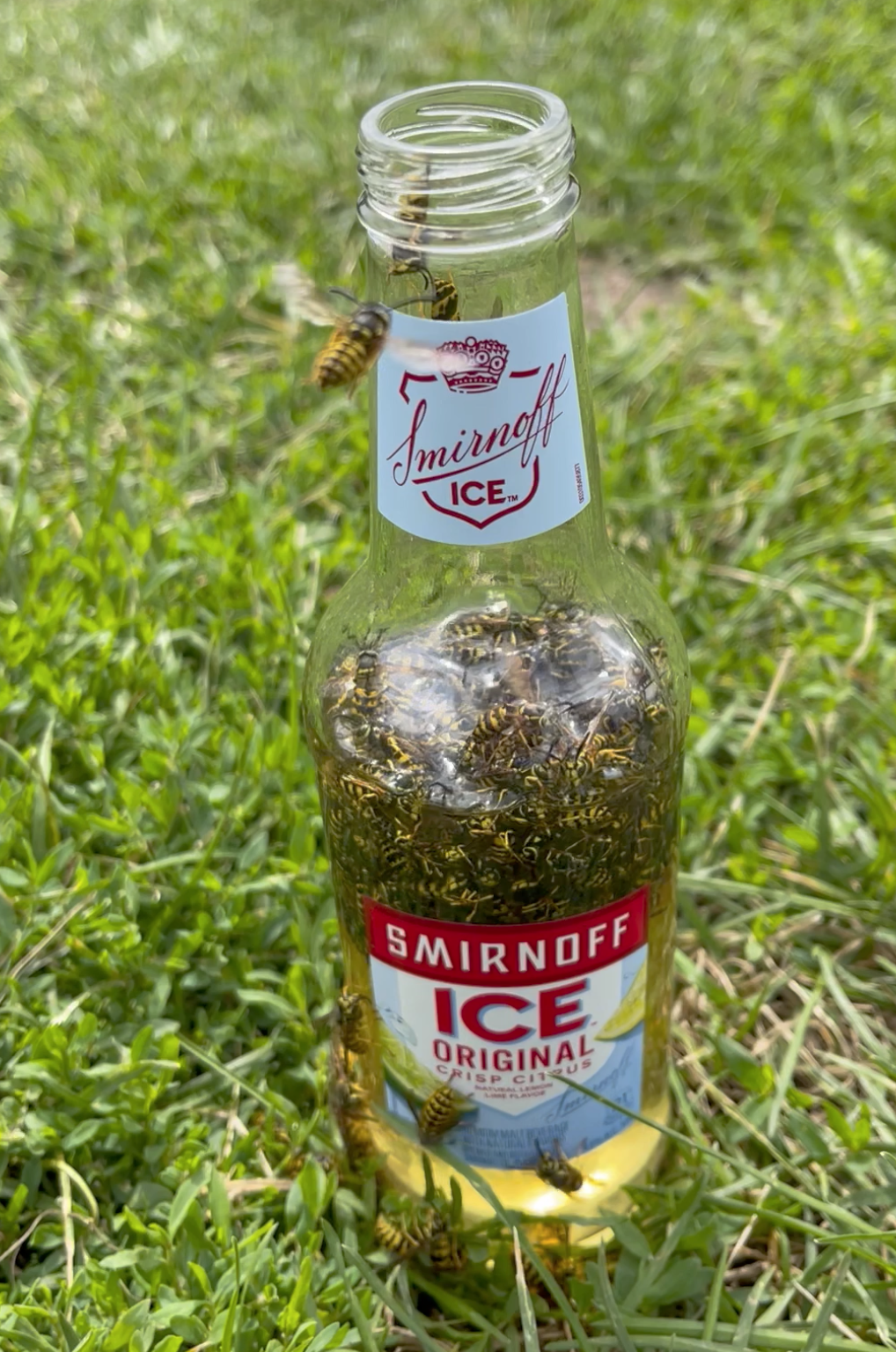
Finally, this is a great time of year for fruits, berries, and seeds, including a characteristic set of species that are emblematic of the Methow Valley.
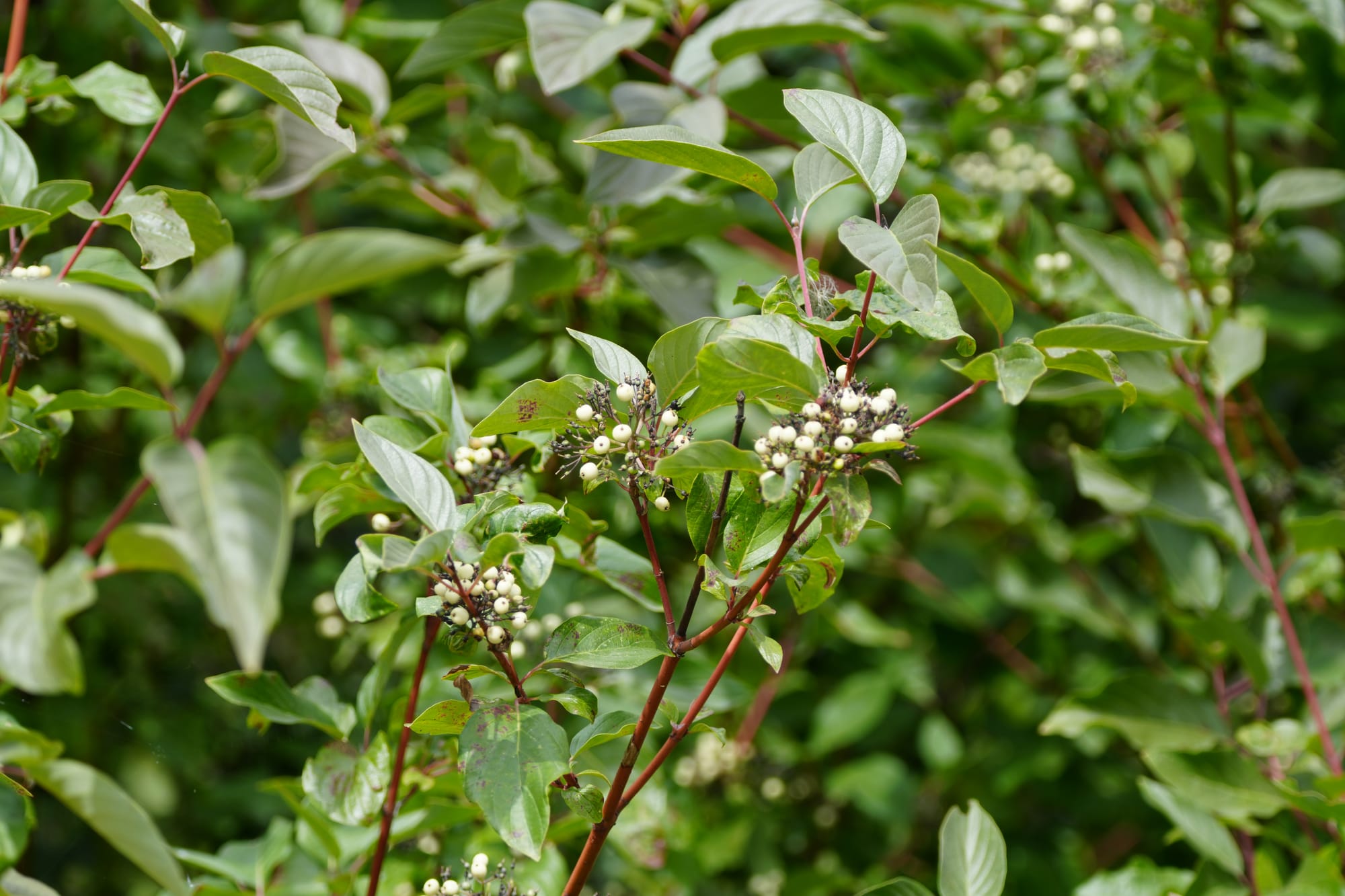
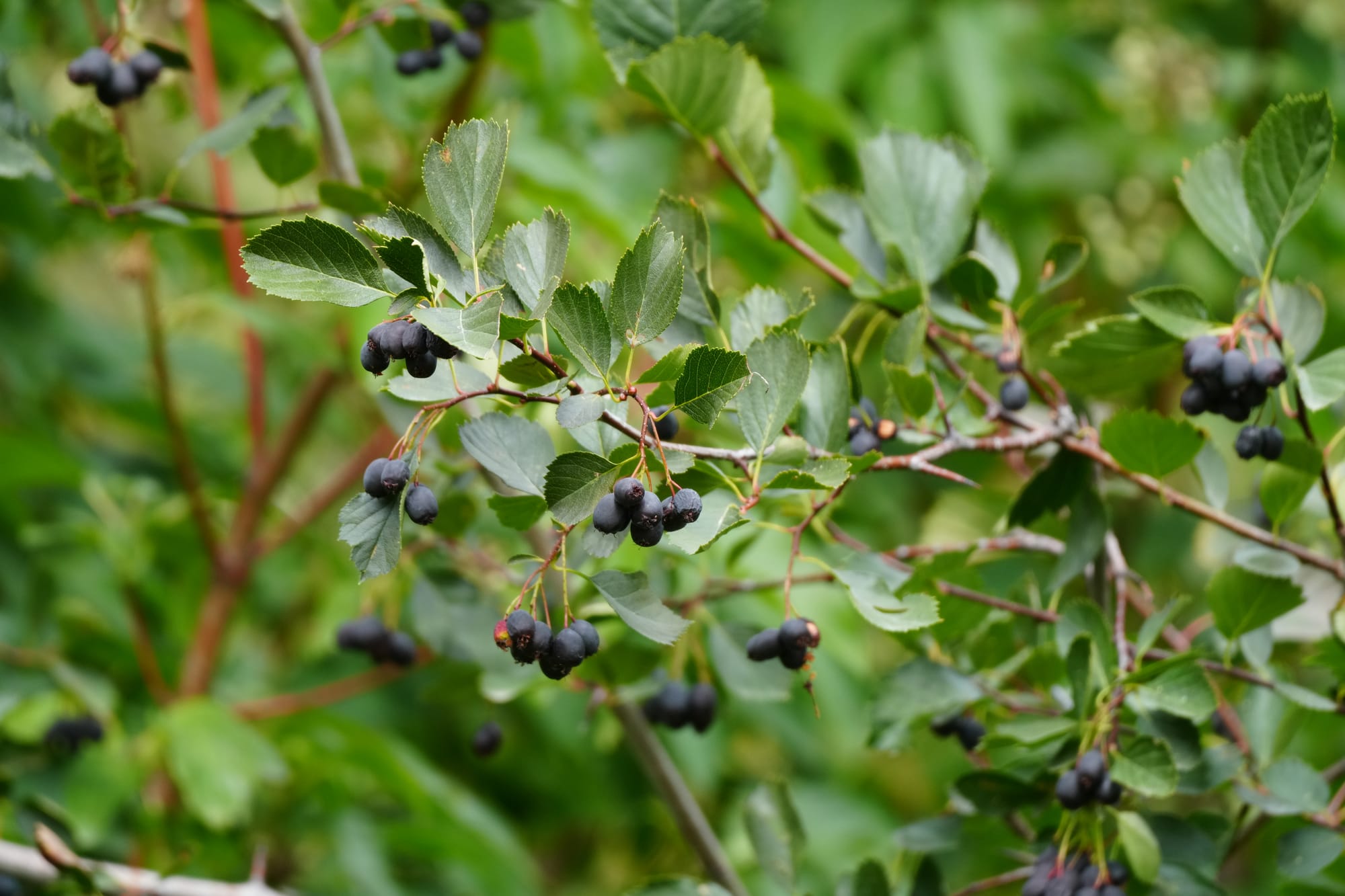
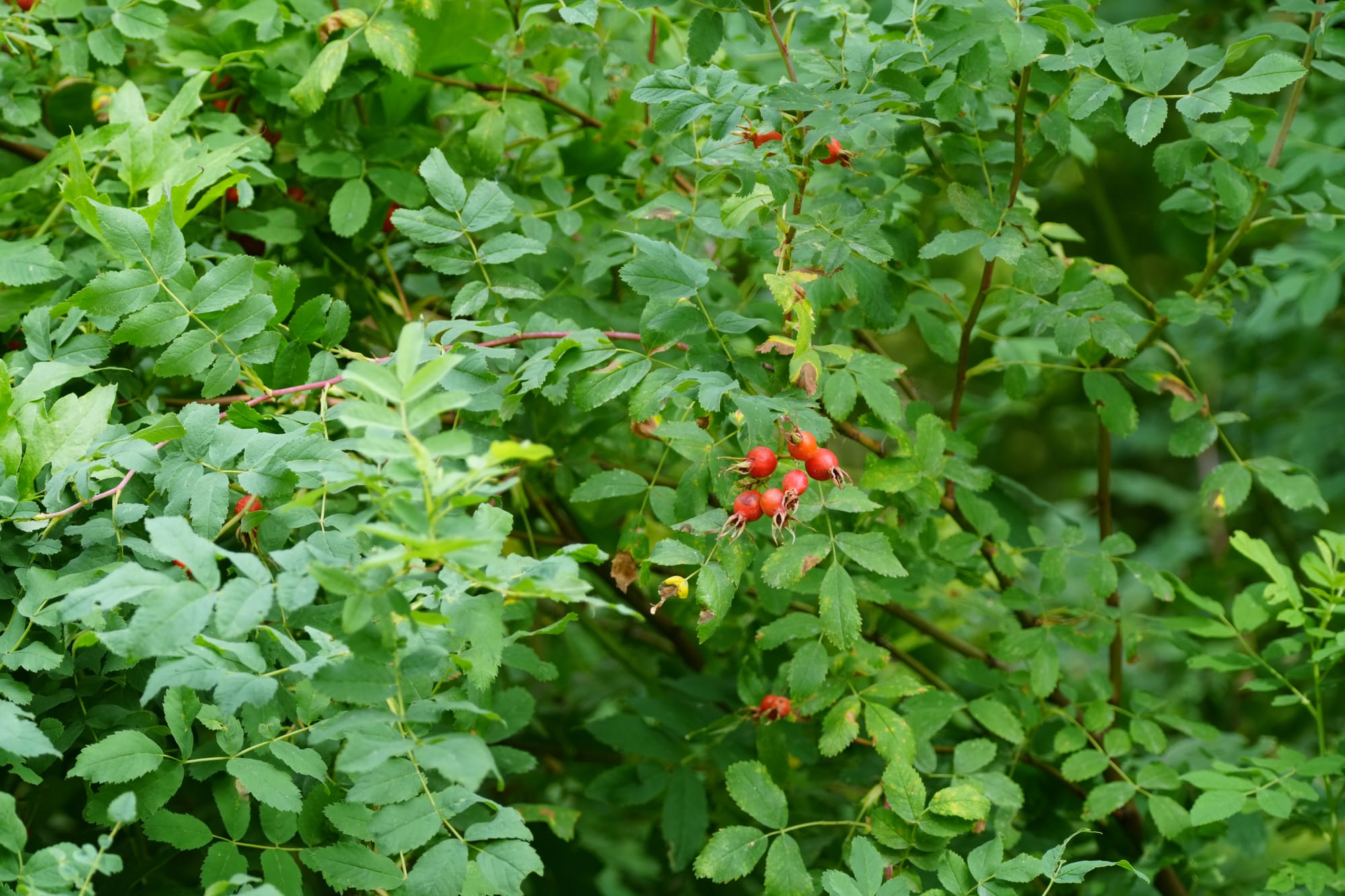
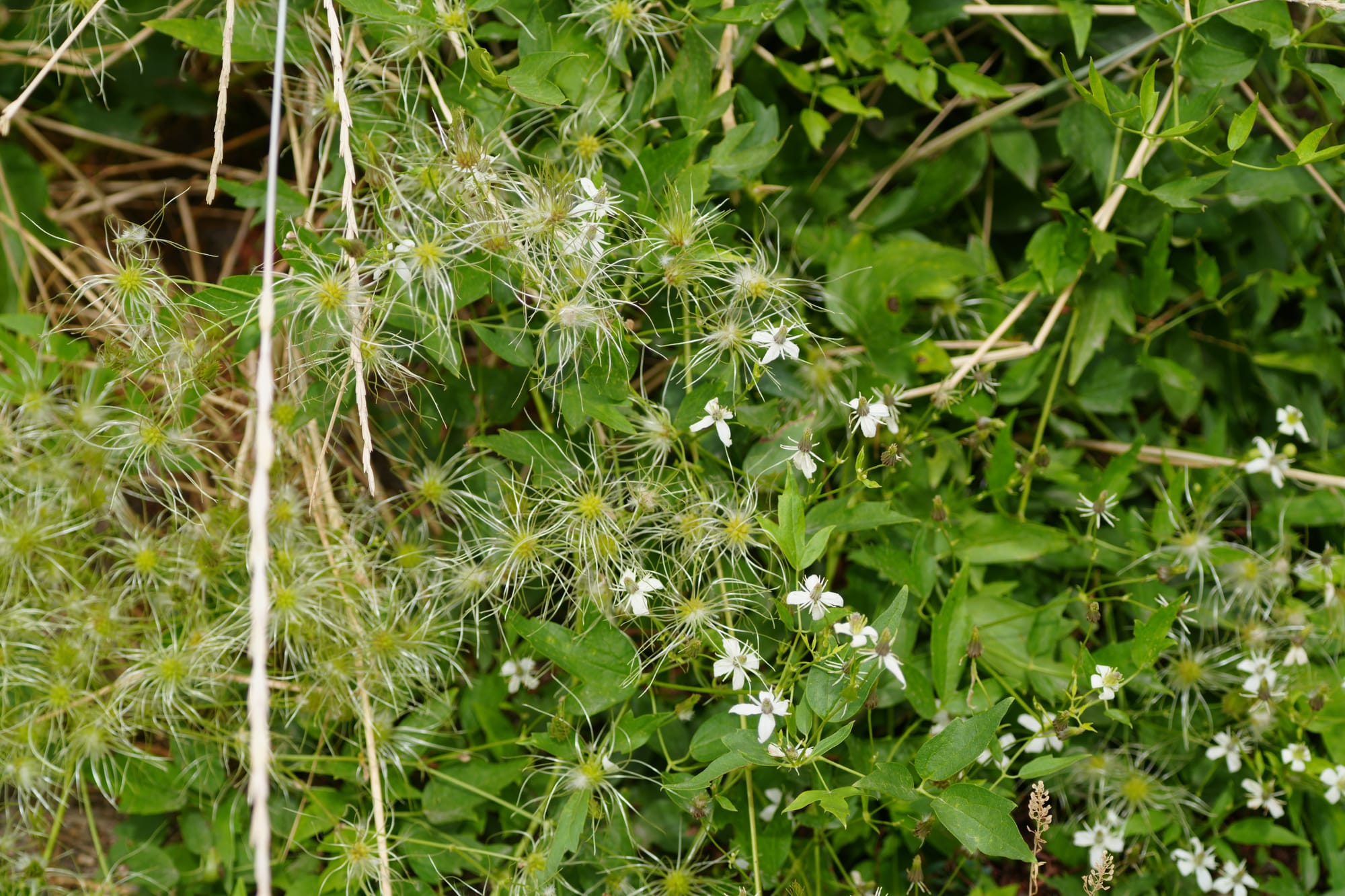
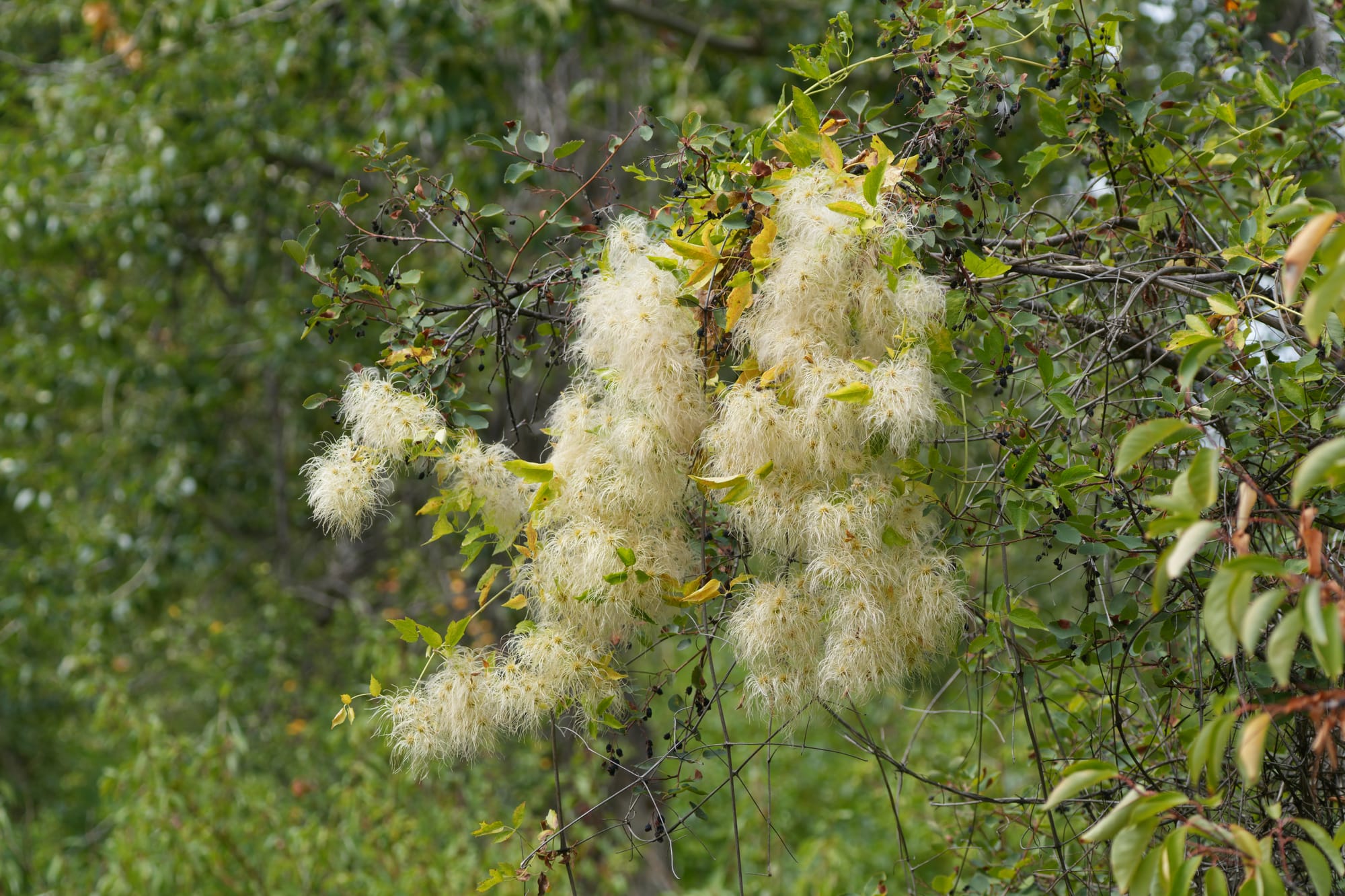
Wild clematis produces both beautiful flowers and conspicuous bowers of long, feathery fruits. Photos by David Lukas
Observation of the Week: Black Swifts
Without a doubt, the observation of the week was an appearance by over 20 black swifts foraging alongside a large group of swallows on August 19. These large swifts are one of North America's least known birds, and almost nothing is known about where they breed and live in Washington. Wikipedia says, "Fewer than 150 black swift breeding sites are known in the United States, with 108 (as of July 2012) known from Colorado."
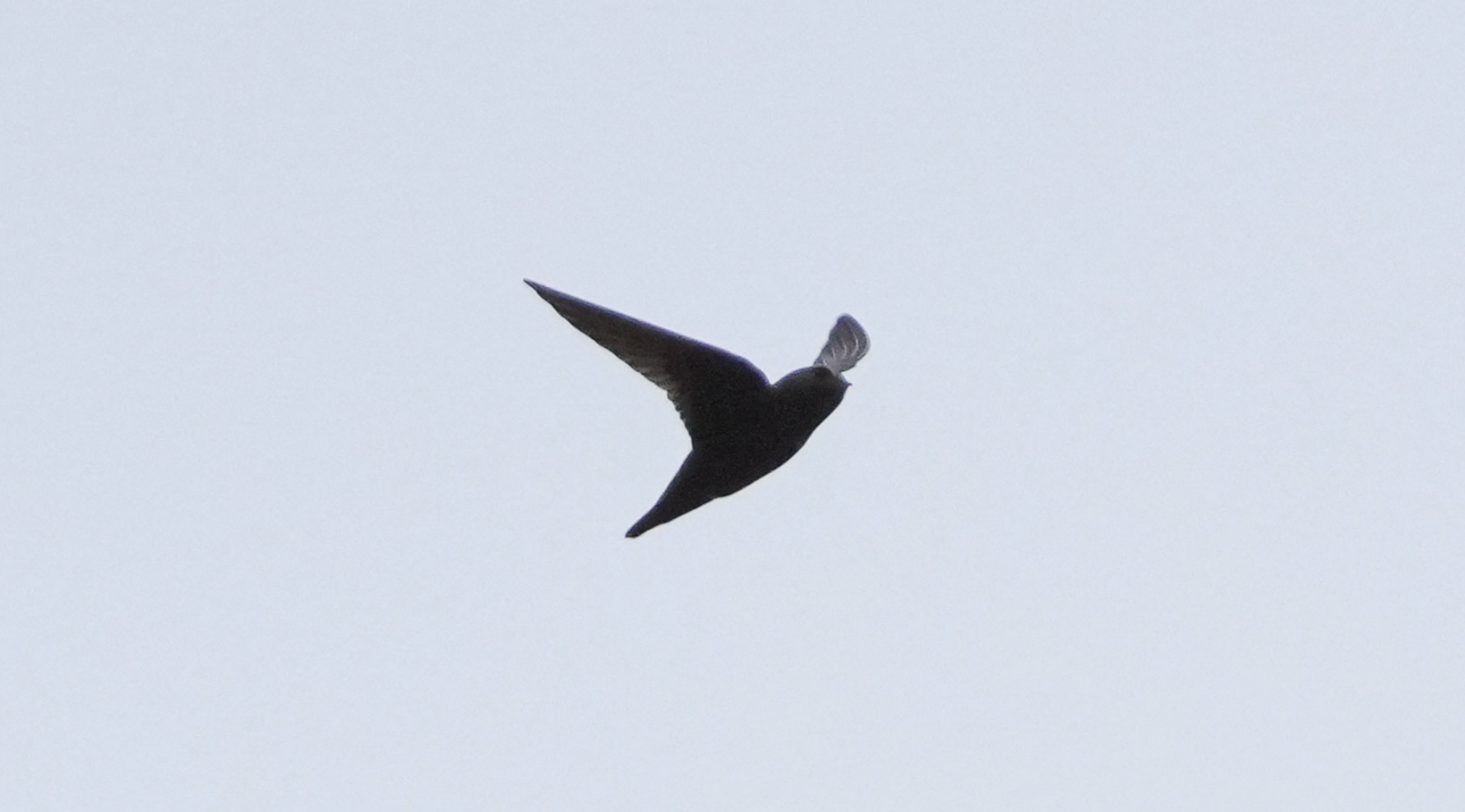
They almost certainly nest in the upper Methow Valley and North Cascades, but this is incredibly hard to confirm because they nest on inaccessible sheer cliffs or behind waterfalls and only visit their nests at dusk. During the day the parents fly vast distances in search of air pressure systems that trap and concentrate their preferred food—large, flying ants (ants are poorly designed for flying so they fuel their flights by storing lots of fat)—but most days the swifts hunt at great heights, so they are rarely seen.
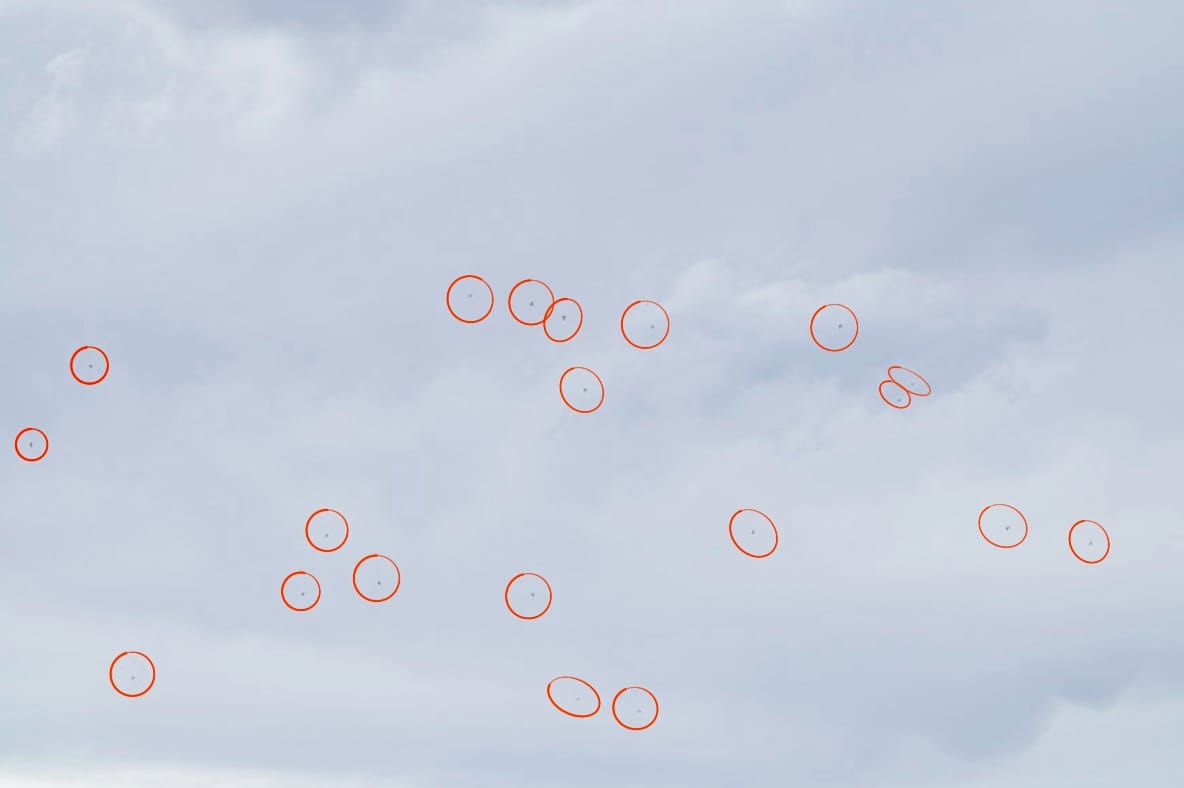
Not only that but most people would overlook a black swift even if they saw one because it takes a lot of practice to learn how to recognize their larger profile and distinct flight pattern as they zip back and forth high overhead.
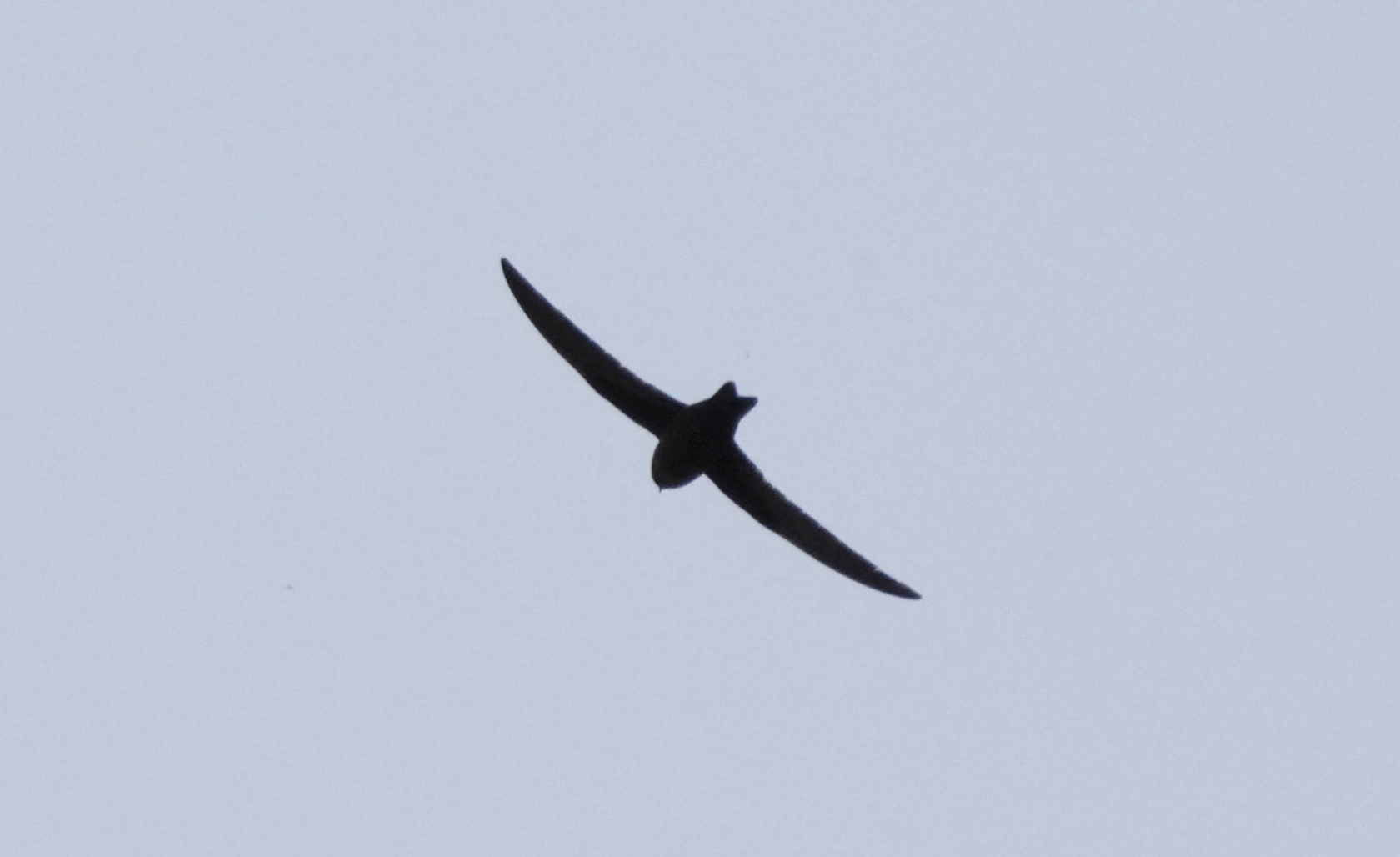
Paying very close attention over the summer, it's possible you might spot a few black swifts in the Methow Valley, but seeing a large group like the one this week is remarkable. It's a tad early for migration, though with the arrival of cold, cloudy days they could be migrating earlier than normal. It's also possible that their chicks are now off the nest and learning how to hunt for themselves as parents and chicks start to gather in preparation for migration.
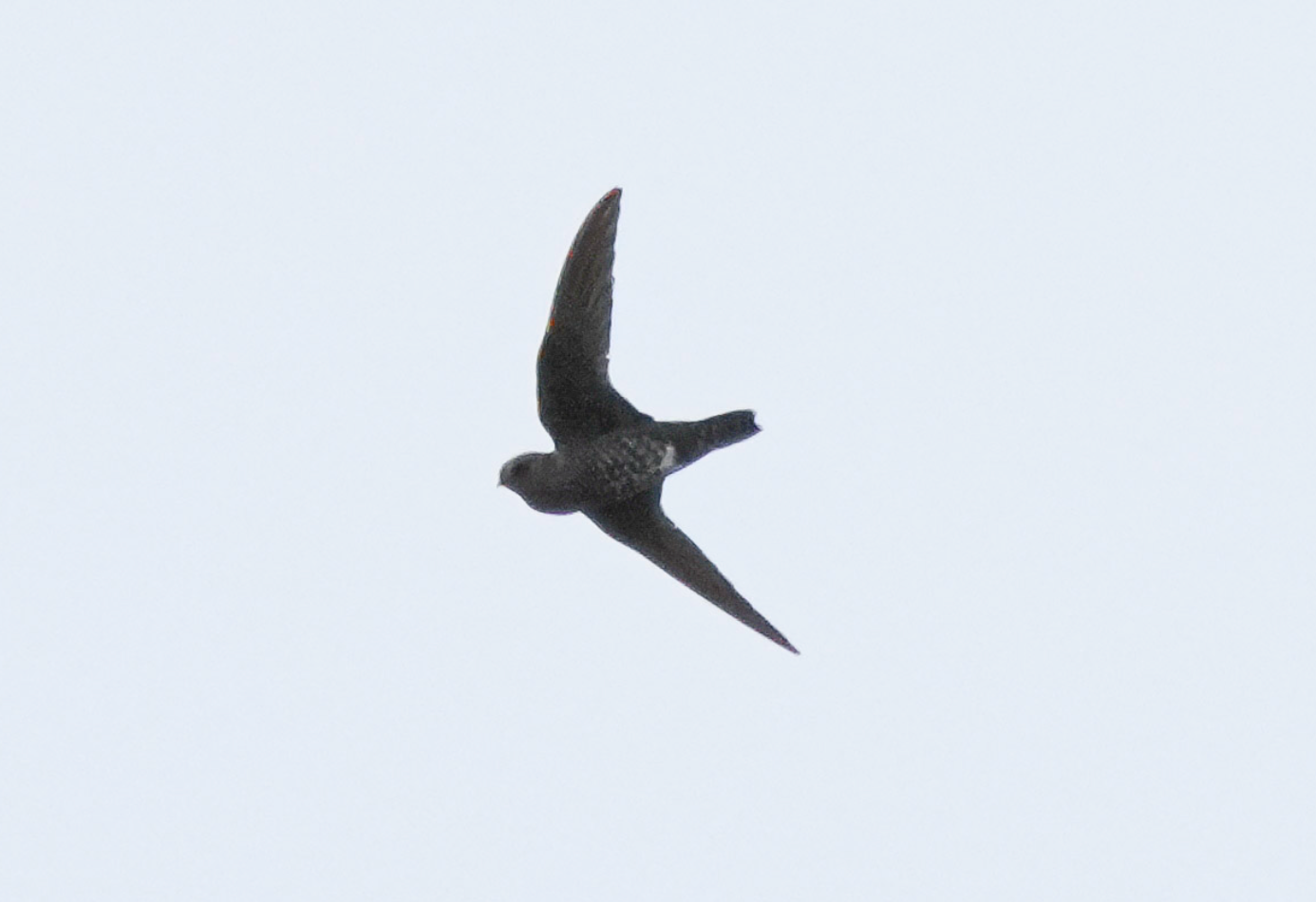
It's hard to tell what birds are doing in this weather because even common nighthawks seem to have disappeared earlier than expected, but let's keep our eyes open over the next couple weeks to see if any more nighthawks or swifts make an appearance.
Thank you for enjoying and sharing the Nature Notes newsletter!

